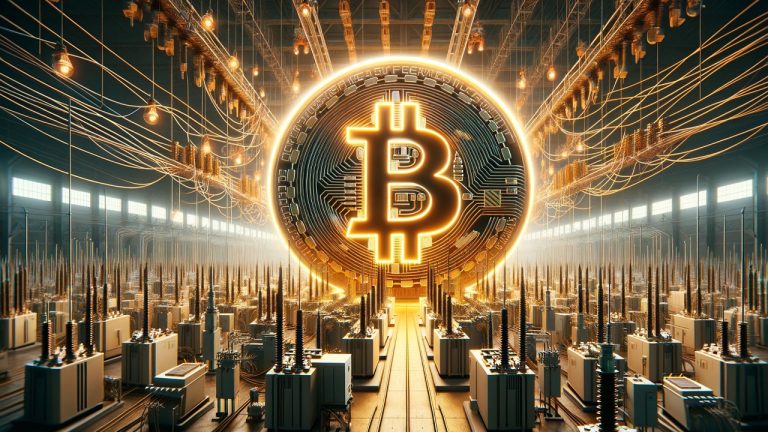
A recently published working paper, collaboratively authored by industry experts, examines the critical influence of bitcoin mining in promoting worldwide clean energy efforts and stabilizing electricity grids. This paper probes into the utility of mining as a flexible and versatile instrument for large-scale demand response in industries and harnessing unused energy resources.
Working Paper Highlights Bitcoin Mining’s Role in Enhancing Global Clean Power Initiatives
Unveiled by Porter on social media platform X, the working paper is the brainchild of Nic Carter, Shaun Connell, Brad Jones, Dennis Porter, and Murray A. Rudd. Porter announced, “Breaking: New working paper co-authored by former ERCOT [and] NYISO CEO, highlights bitcoin mining as a critical tool for clean energy and balancing the grid.”
The rapid progression of bitcoin mining into a major energy consumer has sparked discussions surrounding its ecological footprint and power consumption. Initially perceived as a high-energy, low-value technology, this perspective is now evolving as specialists acknowledge its significance in energy management and ecological stewardship.
The working paper accentuates the integral role of bitcoin mining in the worldwide transition towards sustainable energy. By becoming an integral part of power system operations, mining bolsters grid flexibility and stability, marking a pivotal role in electricity production and grid management. This innovative strategy positions mining at the vanguard of technological advancements in energy systems.
“An emerging body of literature is shedding light on the symbiotic relationship between bitcoin mining and renewable energy sources,” the paper details. “The integration of these two seemingly disparate domains offers an opportunity for renewable energy asset owners to optimize their resources and economics in novel ways.”
The report identifies bitcoin miners as a novel category of adaptable energy users, possessing unparalleled flexibility in energy consumption. Their rapid adaptability to grid demands is invaluable for integrating higher levels of renewable energy, thereby contributing to the decarbonization of power grids like ERCOT (Electricity Reliability Council of Texas).
This paper spotlights demand response (DR) and the necessity for grids to perpetually align supply and demand to sustain stability and prevent blackouts. DR aids this equilibrium by modifying the demand aspect, motivating consumers (both residential and commercial) to adjust their electricity use during peak times or grid stress. The paper elaborates on how bitcoin miners uniquely support DR systems.
“However, despite its potential, DR remains significantly underdeveloped, accounting for a mere 0.5% of global generation,” the paper remarks.
It notes ERCOT’s dynamic and extensive wholesale grid, providing distinctive economic possibilities for bitcoin miners. Their ability to actively engage in the market, leveraging Texas’ isolated grid for its flexibility needs, renders bitcoin mining a lucrative and viable operation within ERCOT.
In Texas, bitcoin miners have demonstrated their pivotal role in DR systems, bolstering both the technical and economic stability of the grid. The paper illustrates their swift response capabilities and precision in adjusting power consumption, making them ideal for integrating variable renewable energies (VREs), thus strengthening the state’s energy framework and marketplace.
The authors further emphasize bitcoin mining’s potential to significantly reduce carbon emissions. Its capability to employ stranded and waste gas, coupled with its role in improving the economics of renewable energy sources, establishes mining as a key player in the global shift to cleaner energy systems.
“There exists the potential to use miners to monetize waste gas and channel resources into mitigating the expenses associated with the closure of abandoned wells and other methane sources, such as landfills and agricultural operations,” the paper asserts.
What do you think about the new paper that discusses bitcoin mining’s role in enhancing clean energy initiatives? Share your thoughts and opinions about this subject in the comments section below.
from Bitcoin News https://ift.tt/aRrOfPh
Comments
Post a Comment